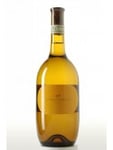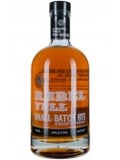3 min read
January for Hosts: Elevated Mocktails That Impress Guests
Your next gathering might include someone who is not drinking. They might be doing Dry January, cutting back, or maybe...

If you look closely, you’ll find liqueur in the liquor section of your favorite specialty shop or grocery store. Wait — they’re not the same thing? That’s right, it’s liquor vs. liqueur, two overlapping but distinct terms.
Let’s walk through the basics.
Liquor is an alcoholic liquid substance created from distilling grains, fruit, or vegetables. Alcohol content comes from fermentation for adult beverages. But, to qualify as liquor, the liquid must be already fermented from the original grains, fruit, or veggies before it’s distilled.
As liquids are distilled, the water is removed and the alcoholic content increases (what’s known as ABV, alcohol by volume). That’s how we get liquor — also known as spirits, hard liquor, hard alcohol, and other boozy terms.
Imagine a big tree. Each big branch on the tree represents a main type of alcohol: one for beer, one for wine, one for liquor, etc.
What is the main difference between liquor and liqueur? It boils down to this: liqueur has added sugar and flavors, while liquor generally doesn’t. Some say it qualifies as a liqueur if there’s 2.5% sugar content or higher.
Remember that metaphorical tree of alcohols? (Getting thirsty, aren’t you?) On the liquor branch, there are smaller branches, and one of those is liqueur. Liqueur is a type of liquor.
Chances are if you’ve had a few cocktails with more than two or three ingredients, you’ve probably had liqueur in your glass alongside the liquor.
You can probably rattle off a bunch of liquors, even if you don’t think you know them:
Some of these liquors are flavored — think citrus-infused vodka, floral gin, and extra-bitey tequila.
Liqueurs are neutral grain spirits flavored with anything from fruits, spices, and herbs to nuts, flowers, or creams. Flavors may be sugary from high fructose corn syrup, or more refined notes like woody, floral, or more complex concoctions. These may also be called cordials or schnapps.
While some prefer a hard liquor neat (no ice) or on the rocks (ice), others may like more easygoing liqueurs to sip. The latter, in European cultures like France and Italy in particular, are called aperitif, to stimulate appetite and taste buds before eating, and digestif, to aid digestion and settling after eating.
More than likely, however, you’ll mix in the base spirits with liqueurs to create the expansive world of delicious cocktails. Consider a few common cocktail liqueurs that you can keep stocked in your home bar:
Feel good about knowing the differences between liquor and liqueur? Step into your next conversation with a bartender or search the store aisles with confidence because now, you’ve got the basics to serve you well.




Jan 6, 2026by Beau Farrell
Your next gathering might include someone who is not drinking. They might be doing Dry January, cutting back, or maybe...
Nov 17, 2025by Beau Farrell
The holidays are supposed to be about celebrating with people you care about and making memories that last. But...
Nov 4, 2025by Beau Farrell
Between late November and early January, you're hosting more gatherings than the rest of the year combined....